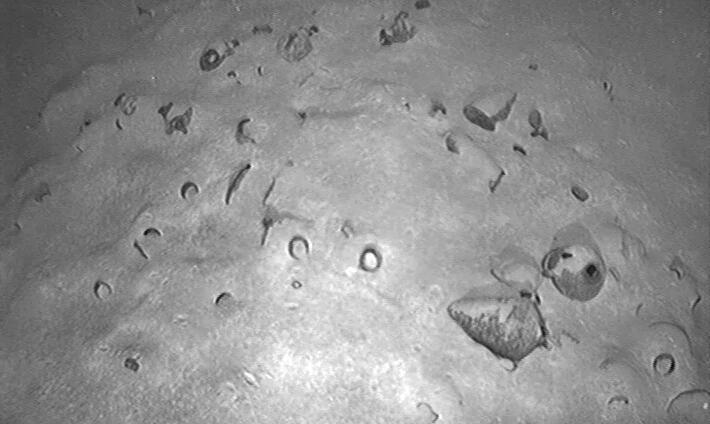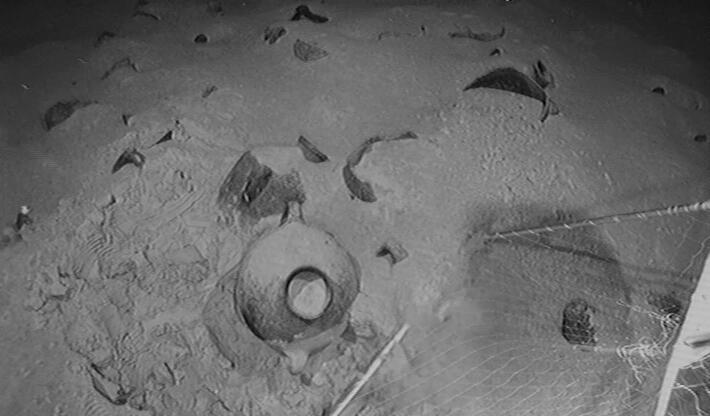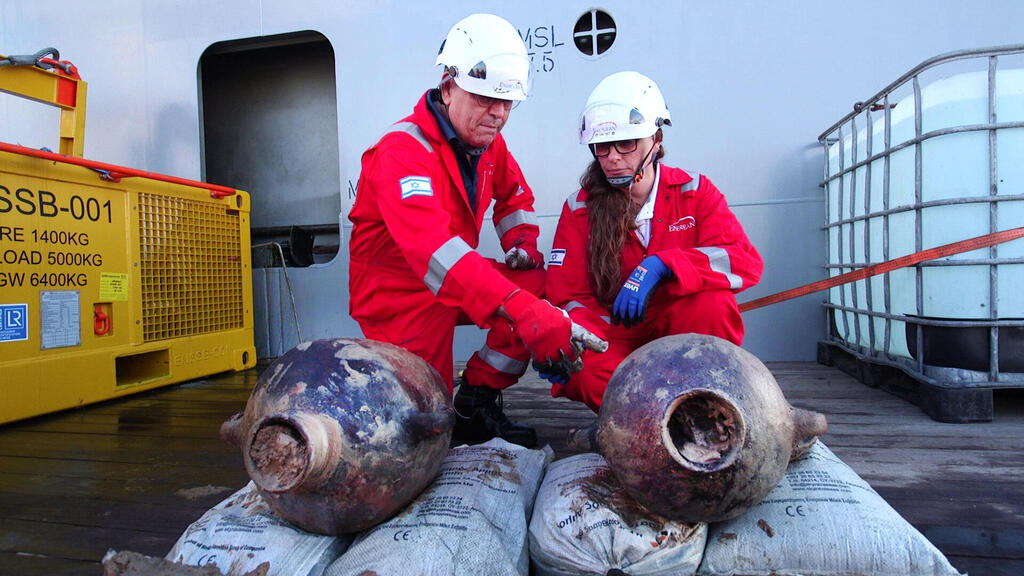Getting your Trinity Audio player ready...
A remarkable discovery has been made in the Mediterranean Sea: a shipwreck dating back approximately 3,300 years. This ancient vessel, found about 56 miles from the northern coast of Israel, lies at a depth of around 5,900 feet. The ship's cargo includes hundreds of well-preserved amphorae, or ancient clay jugs, providing a unique glimpse into ancient maritime capabilities and trade.
This shipwreck is the oldest-known vessel discovered in deep waters, highlighting the advanced seafaring skills of ancient mariners who navigated without coastal landmarks. The find was made during a routine seafloor survey conducted by Energean, a prominent natural gas exploration and production company operating in the Eastern Mediterranean. The Israel Antiquities Authority is currently investigating the site.
In response to this significant discovery, Energean has initiated a specialized operation to retrieve sample vessels from the shipwreck. These artifacts will be displayed at the Jay and Jeanie Schottenstein National Campus for the Archaeology of Israel, which will soon offer limited tours to the public.
The ship's cargo, dating from the 14th to 13th century BCE, consists of Late Bronze Age Canaanite storage vessels. This discovery not only sheds light on ancient trade routes but also underscores the historical importance of the Mediterranean Sea as a hub of cultural and economic exchange.
Jacob Sharvit, head of the Israel Antiquities Authority Marine Unit, said a crisis brought down the ship.
“The ship seems to have sunk in crisis, either due to a storm or to an attempted piracy attack – a well-known occurrence in the Late Bronze Age. This is both the first and the oldest ship found in the Eastern Mediterranean deep sea, 90 kilometers from the nearest shore. This is a world-class, history-changing discovery. This find reveals to us as never before the ancient mariners’ navigational skills – capable of traversing the Mediterranean Sea without a line of sight to any coast. From this geographical point, only the horizon is visible all around. To navigate they probably used the celestial bodies, by taking sightings and angles of the sun and star positions,” according to Sharvit.
“As part of our ongoing activity to discover and extract natural gas from the deep sea, we conduct surveys that check different parameters, using an advanced submersible robot to scour the seafloor,” says Dr. Karnit Bahartan, Environmental Lead at Energean. “About a year ago, during a survey, we saw the unusual sight of what seemed to be a large pile of jugs heaped on the seafloor. We are in ongoing contact with the Israel Antiquities Authority, and when we sent them the images it turned out to be a sensational discovery, far beyond what we could imagine.”
In light of this discovery’s tremendous importance, Energean rose to the occasion and dedicated a team to work together with Israel Antiquities Authority experts to closely investigate the boat, using their “Energean Star” ship equipped to conduct deep-sea work. The company’s technicians planned a unique, complex operation and even built a special tool to enable extracting artifacts with minimal risk of damage to the entire assemblage.
Appreciating the profound importance of the find, Energean quickly assembled a dedicated team to work alongside the Israel Antiquities Authority experts. They deployed their state-of-the-art deep-sea vessel, the "Energean Star," to thoroughly explore the ancient shipwreck site. Energean's skilled technicians orchestrated a highly detailed and complex operation to recover the artifacts safely. They crafted a bespoke tool specifically designed to extract the ancient vessels with minimal risk, ensuring the integrity of the entire collection. This collaborative endeavor highlights Energean's dedication to historical preservation while showcasing their advanced technological prowess in deep-sea operations.
“The robot’s survey and mapping of the site clarified this to be a sunken ship ca. 12-14 meters long that was transporting hundreds of vessels, of which only some are visible above the ocean floor. The muddy bottom conceals a second layer of vessels, and it seems that wooden beams of the ship are also buried within the mud,” says Sharvit.
In the course of two days of work at sea, the Energean team extracted two vessels, each from a different extremity of the ship, to minimize disturbances to the intact assemblage of the boat and its cargo.
“The vessel type identified in the cargo was designed as the most efficient means of transporting relatively cheap and mass-produced products such as oil, wine and other agricultural products such as fruit. Finding such a great quantity of amphorae on board one single ship is testimony to significant commercial ties between their country of origin and the ancient Near Eastern lands on the Mediterranean coast”, says Sharvit.
“This is a truly sensational find," he adds. "Only two other shipwrecks with cargo are known from the Late Bronze Age in the Mediterranean Sea – the boat from Cape Gelidonya and the Uluburun boat; both found off the Turkish coast. Yet both of those shipwrecks were found relatively near the shore, and were accessible using normal diving equipment. Based on these two finds, the academic assumption until now was that trade in that time was executed by safely flitting from port to port, hugging the coastline within eye contact. The discovery of this boat now changes our entire understanding of ancient mariner abilities: It is the very first to be found at such a great distance with no line of sight to any landmass. There is tremendous potential here for research: The ship is preserved at such a great depth that time has frozen since the moment of disaster – its body and contexts have not been disturbed by human hand (divers, fishermen, etc.); nor affected by waves and currents which do impact shipwrecks in shallower waters.”
Shaul Zemach, Energean Israel CEO, addresses the company’s decision to execute such a complicated operation to extract archaeological artifacts from the ocean floor. “The ongoing relationship with the Israel Antiquities Authority is an inseparable element of Energean’s connection to the community, and exemplifies our commitment to society and to the environment. In this complex project our team exhibited extraordinary professionalism, and we are happy to be partners to a discovery of this magnitude,” he said.
Eli Escusido, Israel Antiquities Authority director, said it is important to tell the public about this discovery.
“The important significance of these finds prompted a decision to exhibit these Canaanite vessels extracted from the seafloor, and to thus tell the public the story of this boat, in the framework of opening the Archaeological Campus for “sample taste” tours this summer. These visits will afford people a glimpse of this unique edifice, its mosaics and laboratories, even before the official opening of our expansive visitor center, currently scheduled two years from today. I earnestly thank Energean for their alertness in identifying this ancient cargo, and for dedicating the resources which have already enabled initial understandings gleaned from this rare shipwreck.”





